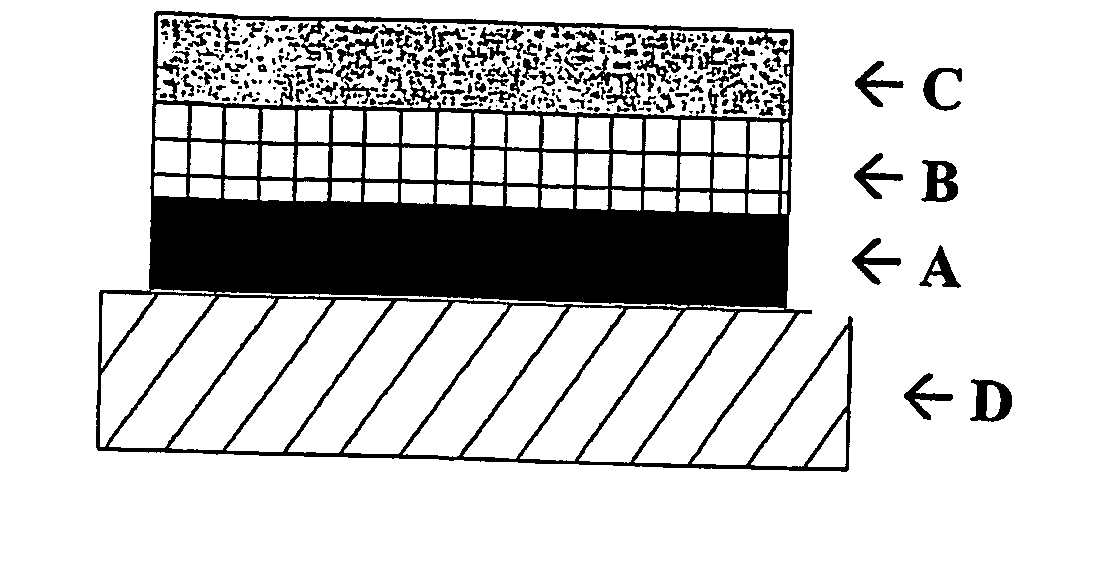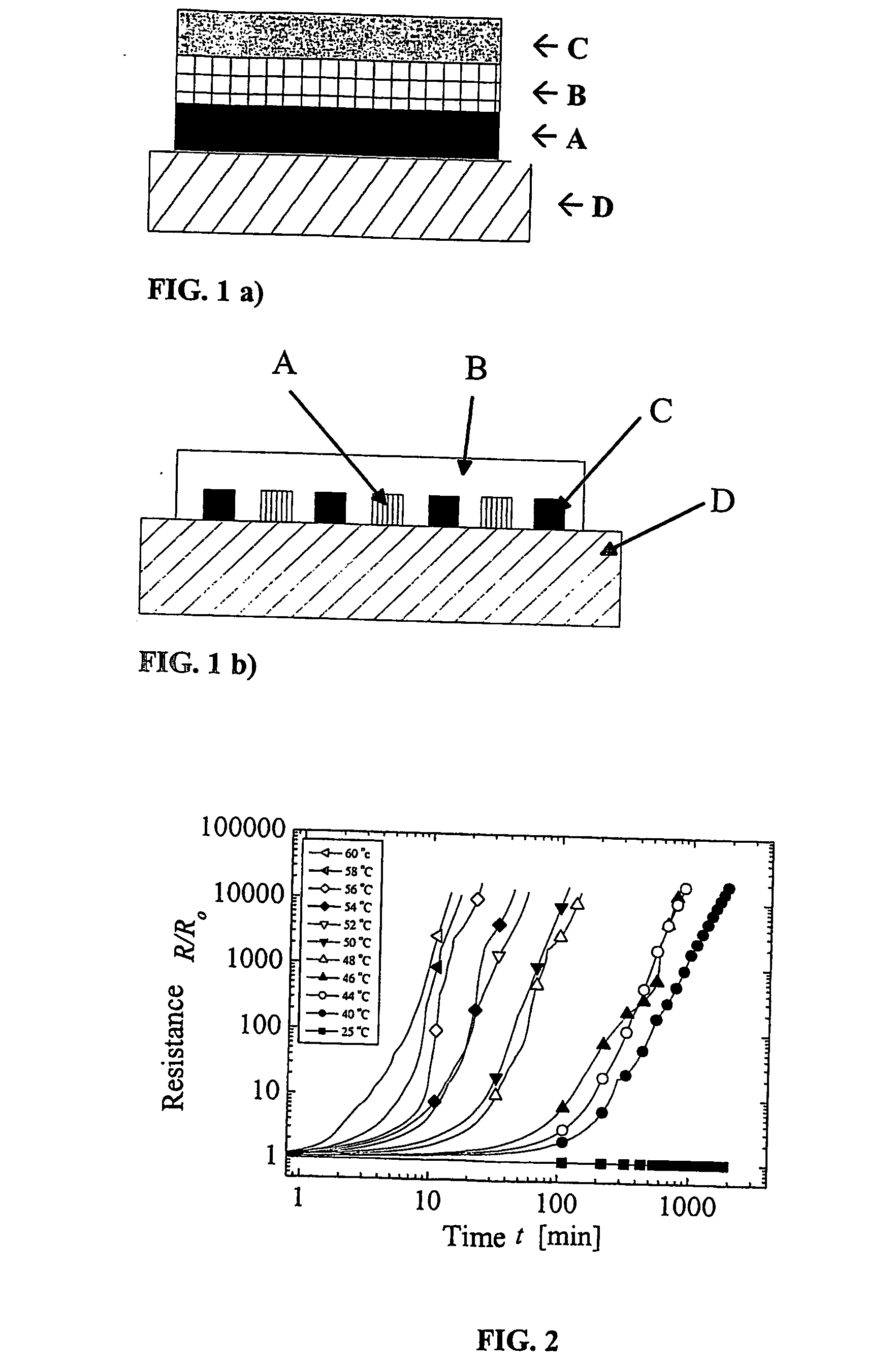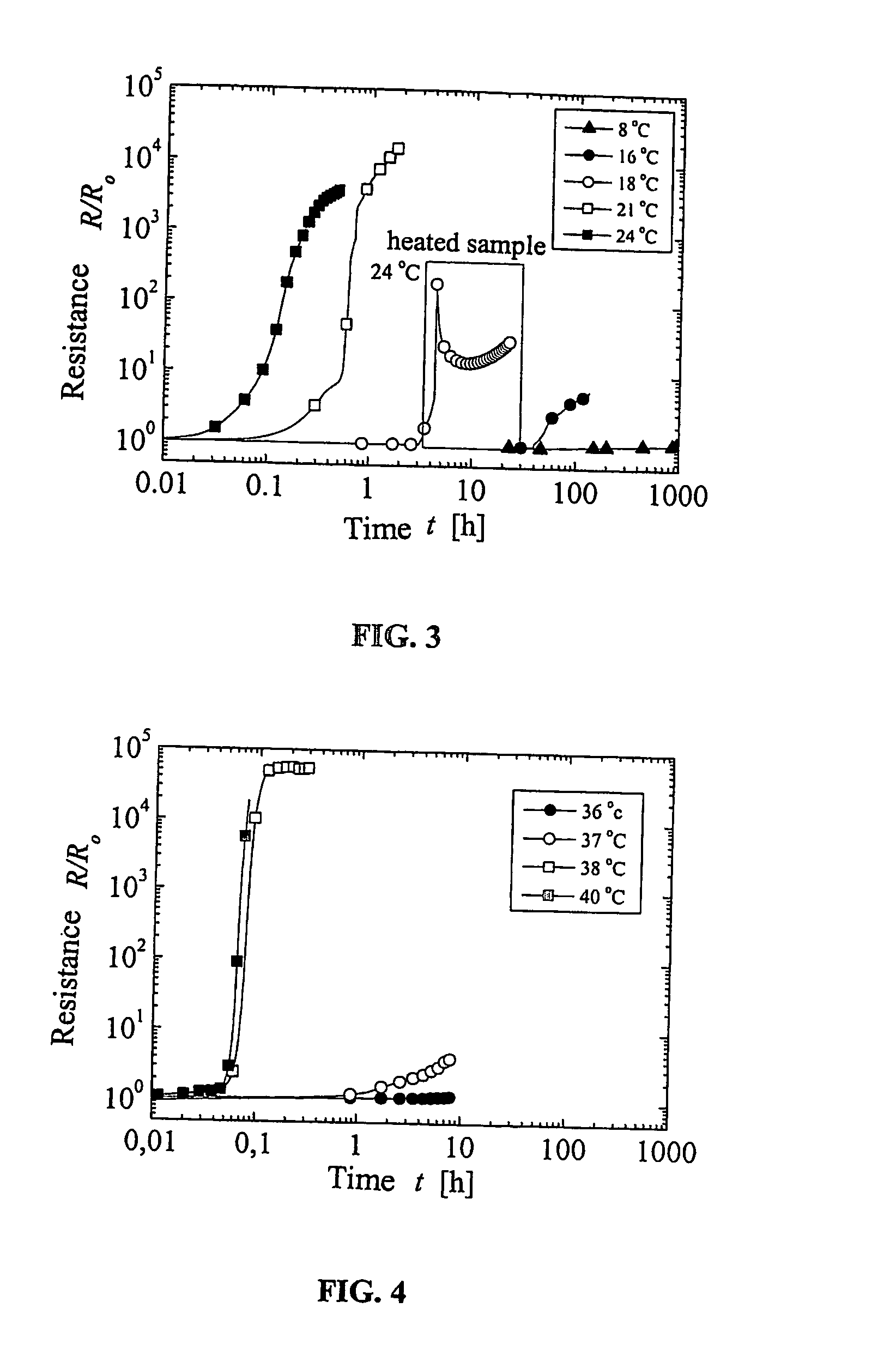Temperature detector/indicator
a temperature detector and indicator technology, applied in the direction of instruments, heat measurement, transportation and packaging, etc., can solve the problems of shortened shelf life and often short life of food products
- Summary
- Abstract
- Description
- Claims
- Application Information
AI Technical Summary
Benefits of technology
Problems solved by technology
Method used
Image
Examples
Embodiment Construction
[0011] It has now been found that the problems associated with solutions according to prior art may be avoided, or substantially reduced by the electrical and / or optical temperature detector / indicator according to the invention. On one hand, said temperature detector / indicator is based on the redox reaction of said conductive polymers, and on the other hand, on transition temperatures of organic or inorganic polymeric or low molecular weight dedoping or doping compounds and / or protective layer materials. A doping compound means here a compound having a pH value not higher than 6, and / or a compound that increases the conductivity of a non-doped conductive polymer more than a 10-fold, whereas a dedoping compound means a compound having a pH value not less than 8, and / or a compound that decreases the conductivity of a doped conductive polymer more than 10-fold.
[0012] In a preferable embodiment a temperature-sensitive protective layer material is used, whereby the protective layer melt...
PUM
 Login to View More
Login to View More Abstract
Description
Claims
Application Information
 Login to View More
Login to View More - R&D
- Intellectual Property
- Life Sciences
- Materials
- Tech Scout
- Unparalleled Data Quality
- Higher Quality Content
- 60% Fewer Hallucinations
Browse by: Latest US Patents, China's latest patents, Technical Efficacy Thesaurus, Application Domain, Technology Topic, Popular Technical Reports.
© 2025 PatSnap. All rights reserved.Legal|Privacy policy|Modern Slavery Act Transparency Statement|Sitemap|About US| Contact US: help@patsnap.com



